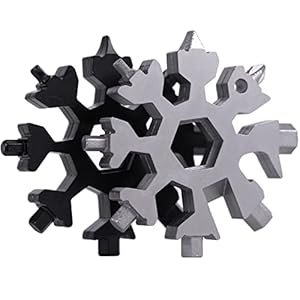
You already know that feeling you get when your mother tells you to do one factor and your dad tells you to do the alternative, so you find yourself doing neither?
If you happen to’ve adopted my work for some time or have learn my book, you may know that I am a big fan of resting meat to be able to assist it retain juices as you eat it. You will additionally know that I am an enormous fan of Meathead Goldwyn, writer of the best book around on the science of barbecue and grilling and the founding father of AmazingRibs.com.
And eventually, if you happen to learn Meathead’s work, you may know that he’s a vocal advocate of not resting your meat, claiming that by doing so, you find yourself shedding the fantastic crisp crust of a well-seared steak or chop.
So the place does that depart us? Is it higher to relaxation steak or not? Do you decide sides, or do you hem and haw so lengthy that your steak will get chilly sufficient to not be value consuming anymore? And who’s the mother and who’s the dad on this state of affairs, anyway?
What if I informed you that there is a strategy to get the very best of each worlds? To get completely rested, juicy, tender meat with a crispy, crackly, straight-off-the-fire crust? There’s a strategy to do it, and it is gonna save this household even when it destroys it.
If you wish to minimize straight to the chase, jump to the bottom of this article. However if you need just a little extra element first, let’s rapidly recap a number of the science right here.
Why I Relaxation My Steak
Critical Eats / J. Kenji López-Alt
There is no query that resting meat helps it to retain juices, although the precise diploma to which it does so is up for debate. I’ve examined dozens of steaks over time, and I’ve discovered important variation.
Generally even a well-rested steak will lose juices if you minimize into it. Generally a very un-rested steak will not spill a drop. However as a common rule, resting meat for about one-third of its whole cooking time ensures that extra juices will keep inside than in your chopping board or plate. It is a good factor in my e book (actually).
The precise mechanism by which this occurs can also be up for debate. Except you are utilizing sure extra fashionable strategies (like sous vide or the reverse sear), cooking a chunk of meat invariably produces a temperature gradient: The meat shall be coolest on the heart and more and more sizzling towards the sides.
The outdated theories say that this temperature gradient causes juices to get trapped underneath stress within the cooler elements close to the middle of the meat, which implies they’re pressured out if you minimize into it, very like the water wrung out of a sponge. These days, most folk agree that that is most likely not what’s taking place.
Extra seemingly is the easier idea I first examine in Modernist Cuisine: Hotter juices are thinner and thus run extra freely. A steak contemporary from the grill could also be 120°F (49°C) within the heart, the place the juices are firmly in place, however it is going to even have a lot hotter areas—within the 185 to 200°F (85 to 93°C) vary—the place sizzling juices run freely. When that steak is allowed to relaxation, it reaches a steady equilibrium at a decrease temperature—not as a lot sizzling juice leaking out.
Why Meathead Does not Relaxation His Steak
Critical Eats / J. Kenji López-Alt
Meathead argues that the advantages of resting meat are overshadowed by its issues.
To start with, what is the massive deal in case your meat leaks juices onto the plate? Cannot you all the time simply sop them up with particular person bites as you eat? Are you actually gonna discover that one chunk has a fraction of a teaspoon much less juice?
He additionally explains that if you happen to’re not cautious about the best way you prepare dinner, resting can result in extreme carryover cooking—the new exterior of the steak primarily causes the cooler inside to overcook as the warmth from the skin transfers inward. Over-resting will depart meat chilly and fat rubbery.
Lastly, and maybe most significantly, resting causes a steak to lose what meat professional Adam Perry Lang describes because the “alive and snappy” crust. He has a very good level.
There’s one thing magical about that crackling, crispy mix of rendered fats, salt, and juices that is attribute of a steak coming straight off the grill or a primary rib popping out of the oven. Even I admit that I all the time decide off a scrap or two of that crispy fats earlier than setting the meat apart to relaxation, and no, that crust doesn’t get higher with time: It is pretty much as good because it’s gonna get proper if you pull it from the warmth.
Meathead additionally makes one other good level, which is that measurable juiciness inside a steak will not be the identical because the juiciness we understand in our mouths. The notion of juiciness includes a posh jumble of issues, together with how rapidly juices are squeezed out of meat fibers by our enamel, how a lot saliva we produce, and the ratio of liquid fats to water-based liquid. You may make a robust argument {that a} scrumptious, crispy crust with liquid fats can get us salivating a lot that the meat will style juicier, even if you happen to’re truly leaving extra juices behind on the plate.
The Fats-Flash Technique for Ending Your Steak (or, How one can Get the Better of Each Worlds)
So, if resting can ship a measurably juicier inside, however consuming instantly delivers higher crust, the perfect steak would have each of these issues, proper? Fortunately, there is a fairly easy and apparent strategy to get there: Relaxation the steak, then re-crisp the crust simply earlier than consuming.
Restaurant cooks could acknowledge this system—it is what they do once they “flash” a steak or different minimize of meat proper earlier than serving it. Often, they use a cranked-up oven or salamander (a broiler on steroids) to quickly reheat and crisp up the outside, particularly if the minimize has been sitting round a couple of minutes longer than preferrred. (Hey, gradual appetizer-eaters: We’re you.) This type of post-rest publicity to intense warmth is not supposed to prepare dinner the meat extra; it is merely meant to revive the outside, get it scorching once more, as if it is simply completed cooking.
If I am grilling steaks or chops open air at dwelling, I exploit a really comparable strategy: I prepare dinner the meat, then let it relaxation. Simply earlier than serving, I flash it on the most well liked fireplace I can muster for about 15 seconds per aspect. If I am cooking indoors, I sear the steak in sizzling fats, then let the meat relaxation on a wire rack set in a rimmed baking sheet.
Then, simply earlier than serving, I reheat the fats and juices left over within the skillet till they’re smoking-hot and pour them proper over the steaks—you may see them sizzle and sputter as they crisp up. That is much like the restaurant hot-oven flash, nevertheless it works even higher: Sizzling fats is a extra environment friendly means of warmth switch than sizzling air, which implies sooner crisping with much less likelihood of overcooking. It additionally provides a last shot of taste to the floor of the steak.
This system works with larger roasts as properly, although, for greatest outcomes, I recommend heating up some contemporary oil or butter with some aromatics, like thyme or shallots, in a skillet till it is scorching sizzling. That is as a result of the drippings from roasts can typically be too watery to successfully crisp the crust.
Critical Eats / J. Kenji López-Alt
What’d I inform ya? We are able to all be one massive, joyful, and well-fed household once more…that’s, if that man Meathead ever lets another person close to the grill for a change. Some individuals. Sheesh.
March 2017
Trending Merchandise











